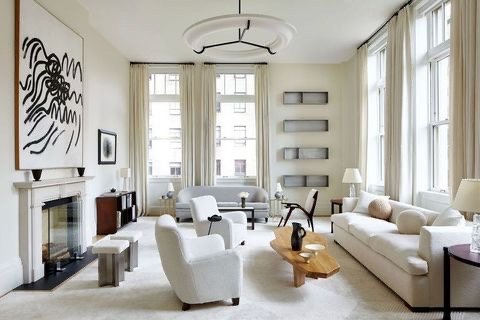DESIGN PRINCIPLES YOU MUST USE TO HELP TRANSFORM YOUR HOME
/Design Principles
If you’ve ever looked through home decor magazines, social media, or even been to a friend’s home and thought to yourself, “There’s something here that I can tell a designer has been here”, and you’ve wondered what the difference is between doing it yourself and getting a designer look, you’re in luck because today, I’m going to share with you some of the rules you need to use to get that look in your own home.
Let me first start by saying that it is not the amount of money spent that makes the difference, and to prove this, head over to TikTok, Houzz, or any of the other social media platforms and you’ll notice that there are tons of creators out there that are not professional designers, and yet they are creating beautiful, professional looking spaces.
The reason for this is simple; they are following the rules; whether they know it or not, they are intuitively following the five elements that help make a room more beautiful. So today, we’re going to break down what those elements are and I’m going to do it in a way that will make it easy for you to understand.
Let’s start with the first rule, balance, which is the foundation of any well-designed room. Balance can be achieved in three ways: symmetrical, asymmetrical, and radial. Symmetrical balance involves mirroring one side of the room with the other, while asymmetrical balance creates balance through weight. Radial balance radiates furniture out from the centre point of the room, creating a balanced look that draws the eye towards the centre of the space.
Color is another important component of balance. Using the 60-30-10 rule, you can achieve a harmonious color scheme in your room. This rule means that 60% of your color should be your primary choice, 30% should be a secondary color, and 10% should be an accent color. Remember to consider the color of your floors, walls, and furniture when creating your color scheme.
The next principle of interior design is rhythm. Rhythm creates visual interest by repeating color, texture, shape, and pattern throughout the room. This repetition keeps the eye moving around the space and unifies different elements of the room. You can create rhythm in your room by using archways, repeating color from a piece of art in your pillows or area rug, or using accessories that vary in size or pattern.
Contrast is another important element of interior design. Without contrast, a room can feel flat and uninteresting. Contrast adds excitement and interest to a space by creating a balance between opposing elements like large and small, dark and light, round and straight or angular, and smooth and textured.
Finally, proportion and scale are essential for creating a comfortable and inviting space. Proportion refers to how well the furniture fits into the size of the room, while scale is how the furniture relates to other pieces in the room. Using the golden ratio, which suggest that your sofa should be two-thirds the size of your wall, your art and coffee table should be two-thirds the size of your sofa, etc, can help ensure that your furniture is the right size for your space. Additionally, consider the height of your ceiling and the size of your room when choosing furniture and decor for your room.
By keeping these five principles of interior design in mind, you can create a space that is balanced, visually interesting, and comfortable. Whether you’re a professional designer, or just an avid, design-loving home owner, these principles are essential for creating a beautiful home.
click here to watch the full YouTube video.











